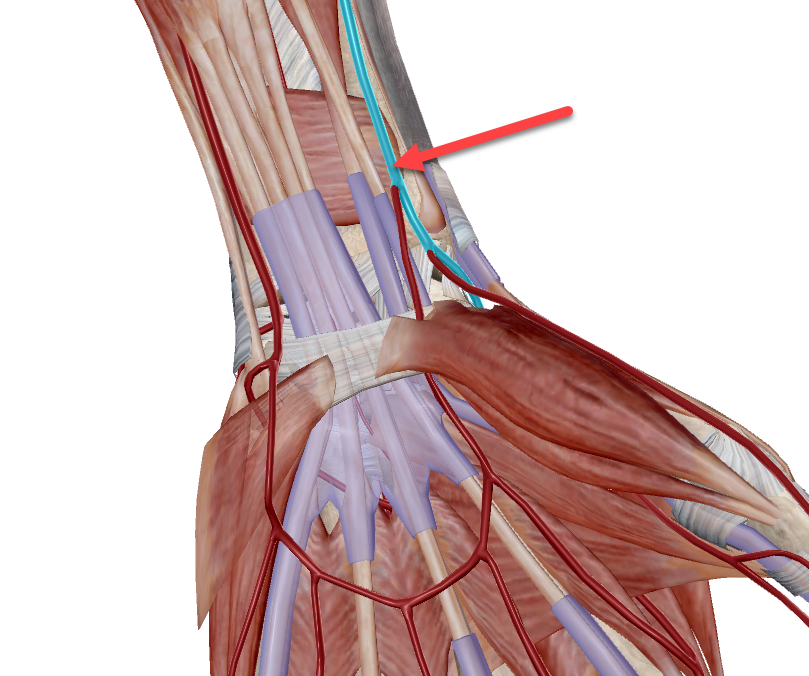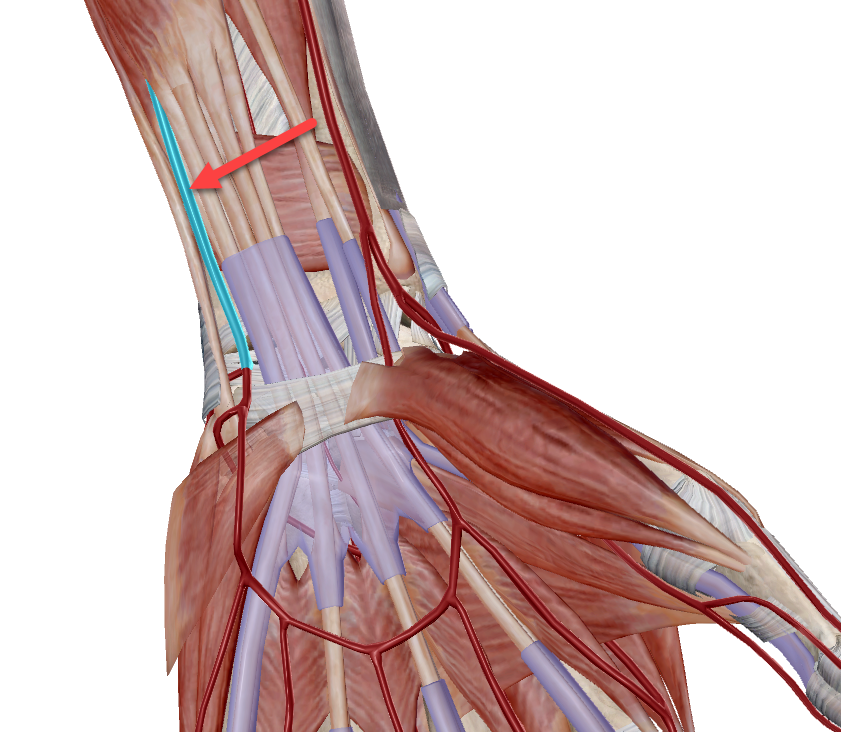7201 Hand and Wrist Blood Supply
Blood Supply: The Lifelines of the Hand
The hand’s blood supply is primarily provided by the radial and ulnar arteries, two major vessels that branch off from the brachial artery in the forearm. These arteries are like the main highways delivering essential supplies to the hand:

Radial Artery: The Lateral Supplier
- Location: The radial artery runs along the lateral (thumb) side of the forearm and wrist.
- Function: It supplies blood to the lateral part of the hand, including the thumb and index finger, and contributes to the deep palmar arch.
- Clinical Importance: The radial artery is often used for taking a pulse or as an access point for certain medical procedures, such as angiography.
- Wound Considerations: Understanding the radial artery’s location is vital for healthcare professionals treating injuries to the wrist or hand, as damage to this artery can lead to significant blood loss or compromised blood flow.

Ulnar Artery: The Medial Supplier
- Location: The ulnar artery runs along the medial (little finger) side of the forearm and wrist.
- Function: It supplies blood to the medial part of the hand, including the little finger, and forms the superficial palmar arch, providing blood to the palmar surface of the hand.
- Collaboration with Radial Artery: Together with the radial artery, the ulnar artery ensures a rich and redundant blood supply to the hand, allowing for flexibility and adaptability in various hand positions and movements.
- Therapeutic Considerations: Knowledge of the ulnar artery’s location and function is essential for therapists and surgeons working with hand pathologies or reconstructive procedures.

Palmar Arches: The Distributors
- Superficial and Deep Palmar Arches: Formed by the collaboration of the radial and ulnar arteries, these arches distribute blood to the fingers and palm, ensuring an even and consistent supply.
- Adaptation to Movement: The palmar arches’ design allows for continuous blood flow even during hand movements, such as gripping or flexing, ensuring that the hand’s tissues receive constant nourishment.
The radial and ulnar arteries are the primary blood suppliers to the hand, ensuring that this complex and versatile part of the body receives the oxygen and nutrients it needs to function. Their collaboration forms the palmar arches, distributing blood to the entire hand. Understanding the hand’s blood supply can provide valuable insights into human vascular biology, surgical interventions, occupational health, and the intricate design that enables the hand’s wide range of tasks.
